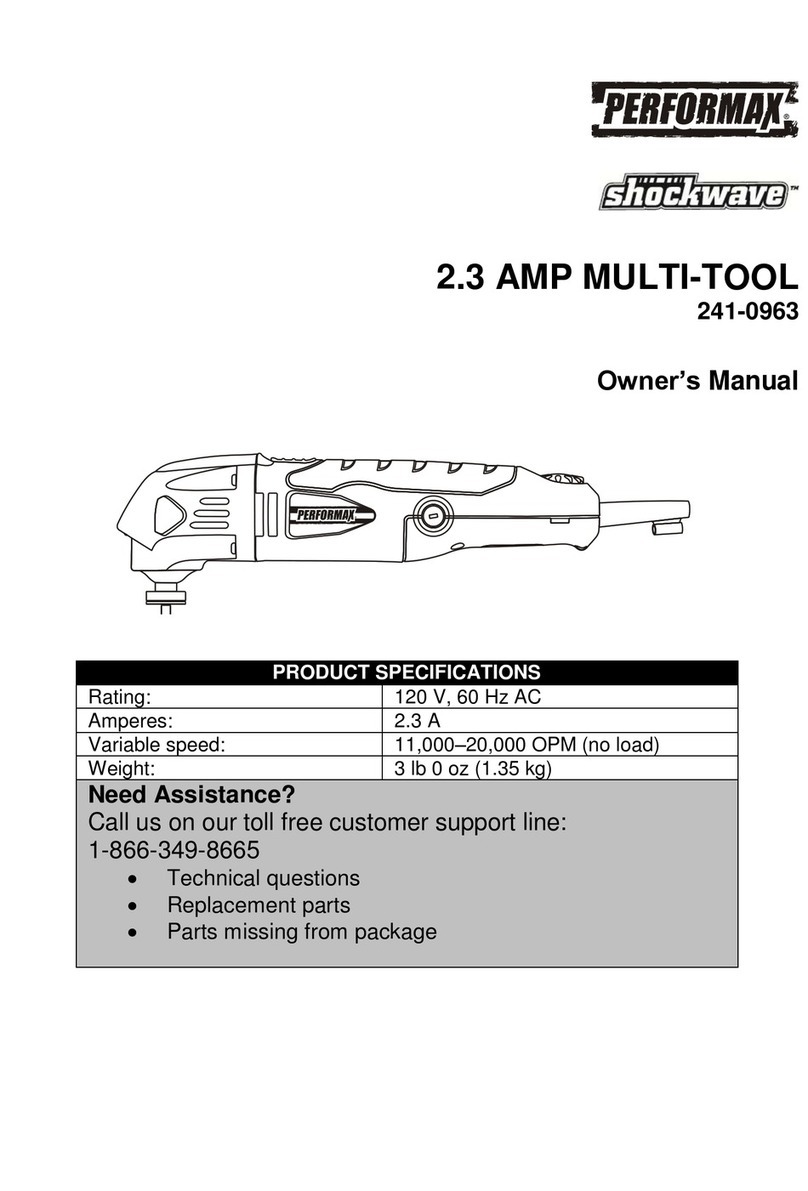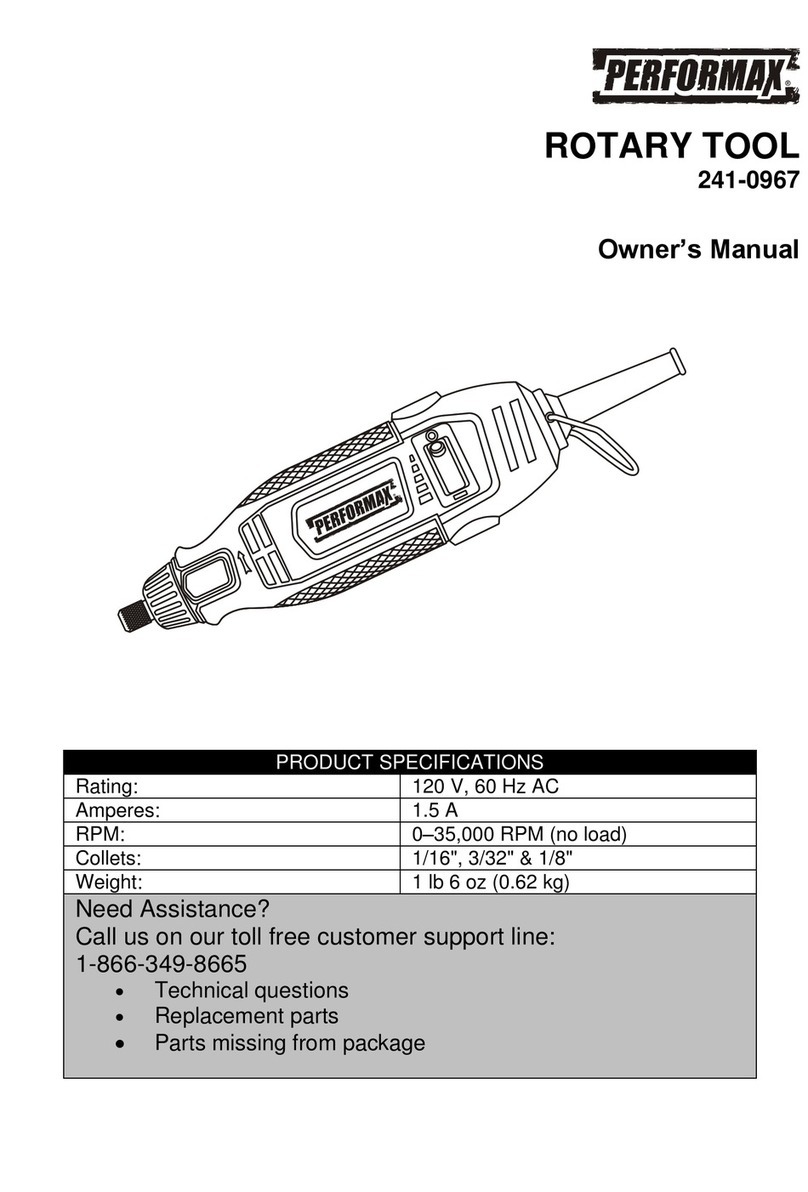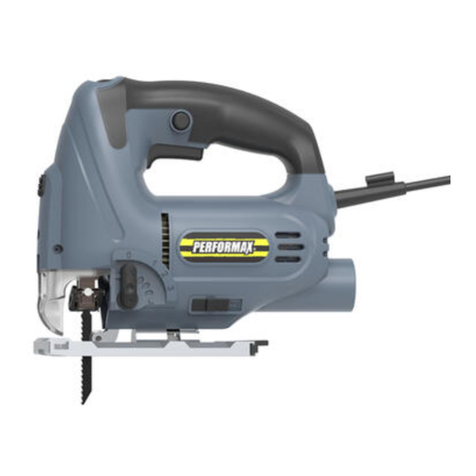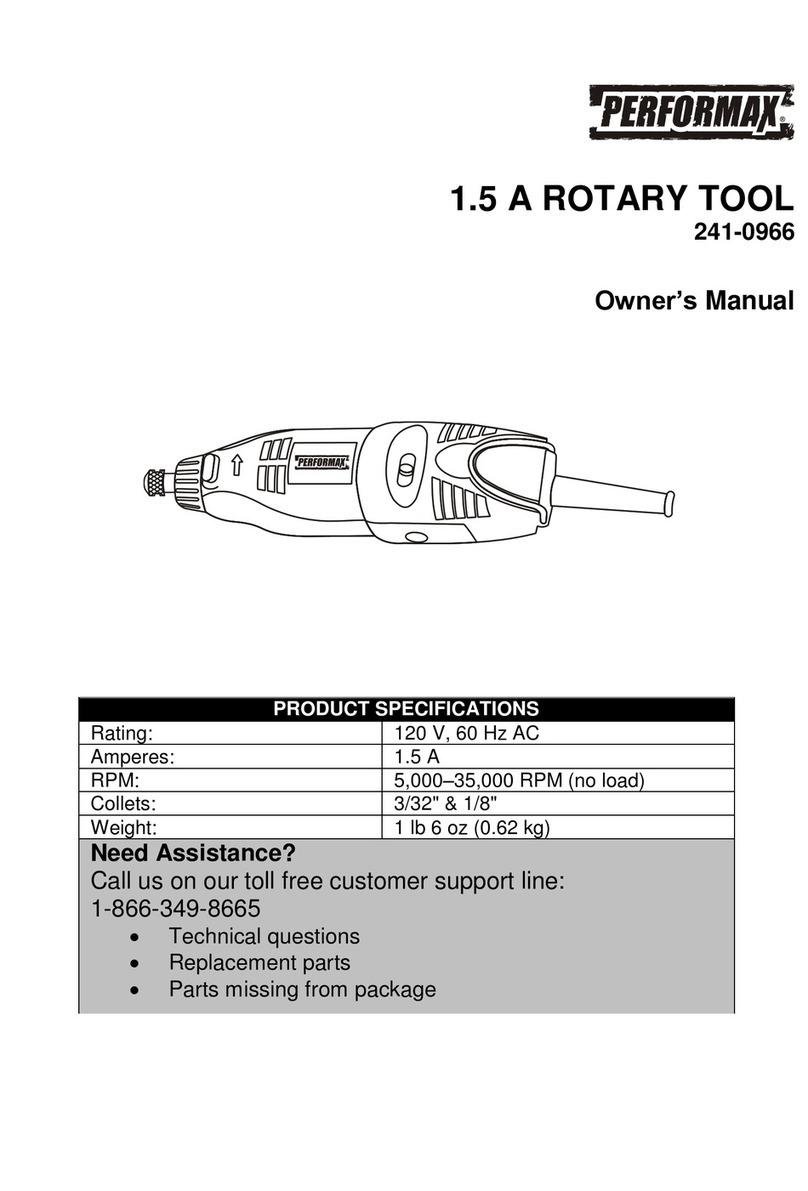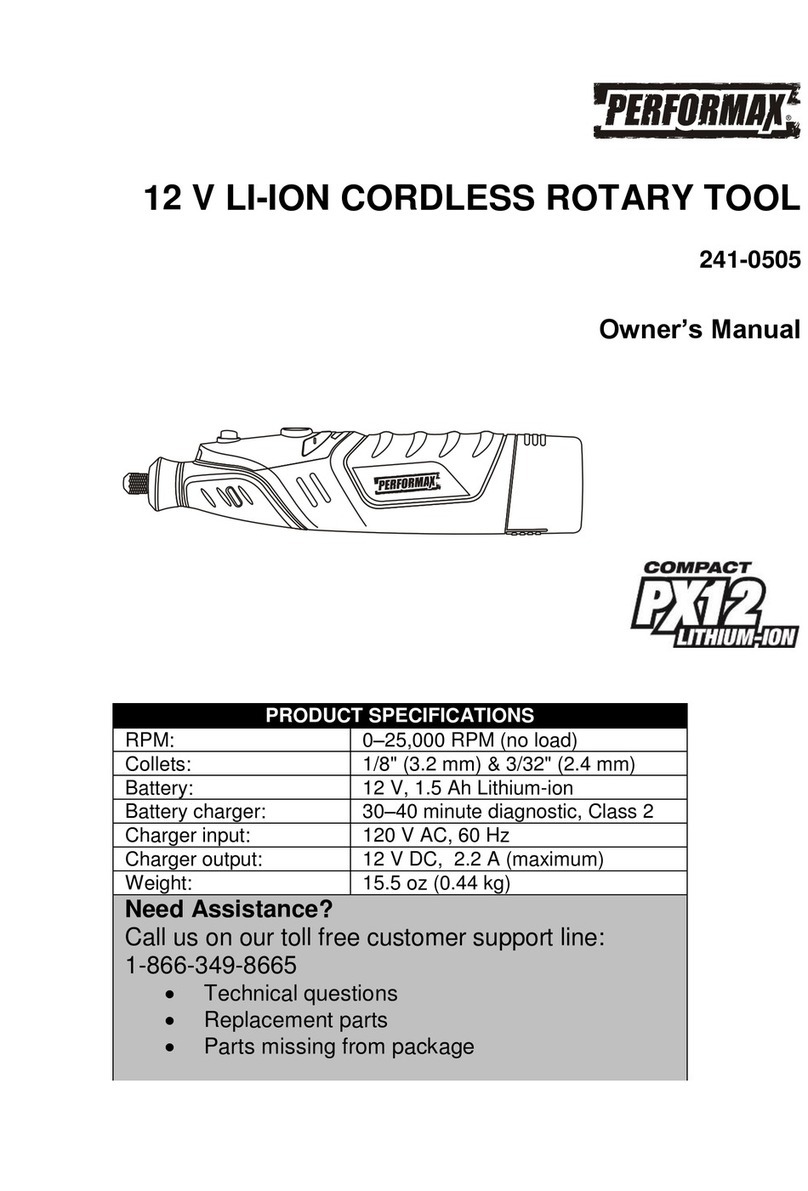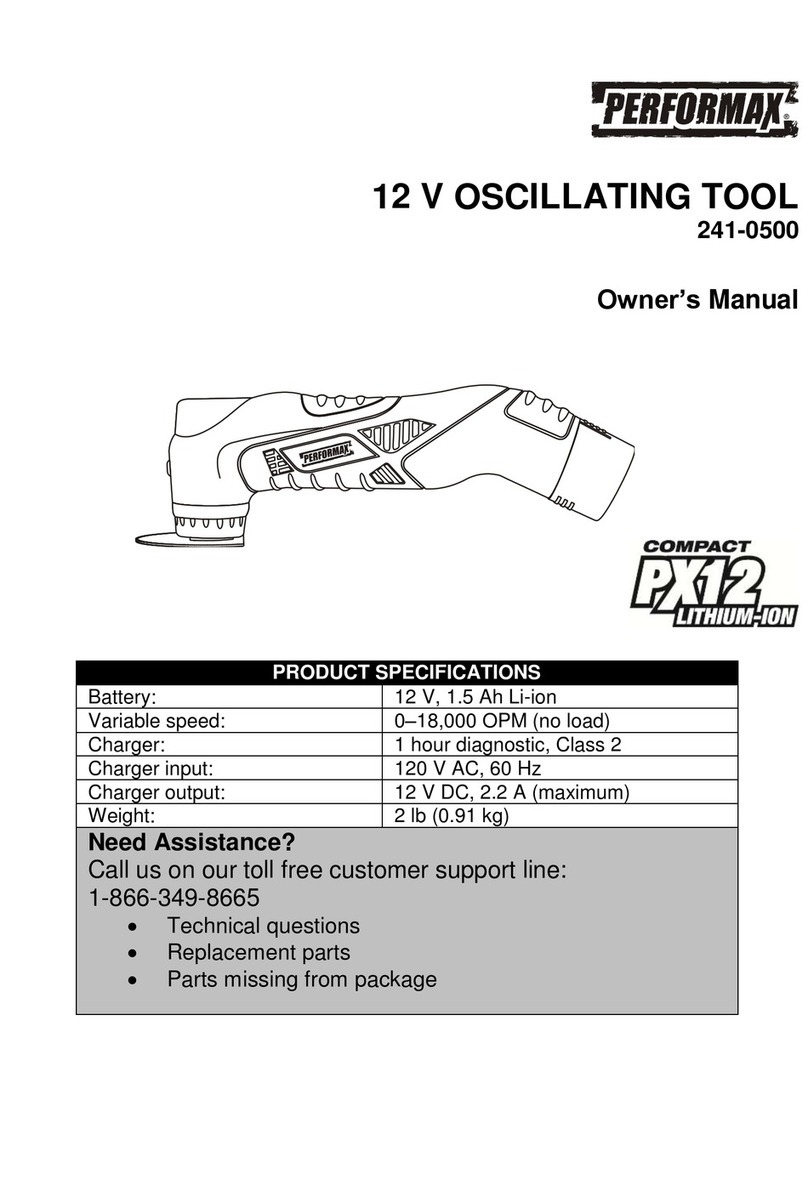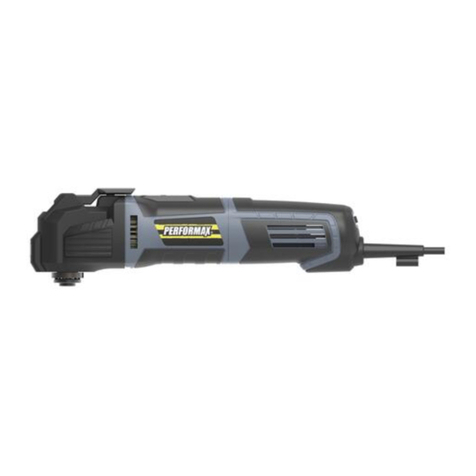•Use recommended accessories. Use of improper
accessories may cause risk of injury to persons.
•Do not overtighten wheel nut. Replace defective wheel
immediately. Use only flanges supplied with the buffer.
•Handle the workpiece correctly.
CAUTION: Think safety! Safety is a combination of operator
common sense and alertness at all times when tool is being
used.
WARNING: Do not attempt to operate tool until it is com-
pletely assembled according to the instructions.
ASSEMBLY
CAUTION: Do not attempt assembly if parts are missing.
Use this manual to order replacement parts.
Buffer comes completely assembled with hex nuts, wheel
flanges and spacers (Key. Nos. 1, 2, and 3) packed separately.
One spiral sewn wheel and one soft wheel are included.
IMPORTANT: Do not attempt assembly if parts are missing.
Use this manual to order replacement parts.
INSTALL BUFFING WHEELS
To install buffing wheels on the buffer:
•Remove plastic protective sleeves from armature shaft
•Slide spacer (Key. No. 3) onto armature shaft. Spacers are
not required when mounting several wheels to shaft.
•Slide inner wheel flange (Key. No. 2) onto armature shaft.
•Slide buffing wheel on to the armature shaft and butt it
against the inner wheel flange.
•Slide the outer wheel flange (Key. No. 2) and butt the flat
side of the flange against the buffing wheel.
•Tighten hex nut (Key. No. 3)on to the armature shaft. Make
sure the buffing wheel is firmly held in place and the hex nut is
snug against the outer wheel flange. Use additional spacers
(not supplied) if required.
•Install buffing wheel on other side of buffer as mentioned
above.
INSTALLATION
MOUNT BUFFER
Buffer must be mounted to a solid horizontal surface (hard-
ware not provided). To mount buffer to metal pedestal:
•Align mounting holes with corresponding holes in pedestal
•Insert a ¼-20 x 1¼ “hex head bolt with flat washer through
base of buffer.
•Place a ¼ “flat washer and ¼ “-20 hex nut from the bottom
of pedestal onto the bolt.
•Tighten until base is flush with the pedestal.
•Using second nut on each bolt, jam tighten against the first
to prevent loosening by vibration.
To mount buffer to wooden bench:
•Use ¼ x 1¼ “wood screws with flat washers beneath
heads.
•Tighten screws until base is flush with bench top.
POWER SOURCE
WARNING: Do not connect buffer to the power source until
all assembly steps have been completed.
The motor is designed for operation on the voltage and fre-
quency specified. Normal loads will be handled safely on volt-
ages not more than 10% above or below specified voltage.
Running the unit on voltages which are not within range may
cause overheating and motor burn-out. Heavy loads require
that voltage at motor terminals be no less than the voltage
specified on nameplate.
•Power supply to the motor is controlled by a single pole
locking rocker switch. Remove the key to prevent unautho-
rized use.
GROUNDING INSTRUCTIONS
WARNING: Improper connection of equipment grounding
conductor can result in the risk of electrical shock. Equipment
should be grounded while in use to protect operator from
electrical shock.
•Check with a qualified electrician if grounding instructions
are not understood or if in doubt as to whether the tool is
properly grounded.
•This tool is equipped with an approved 3-conductor cord
rated at 150V and a 3-prong grounding type plug (Figure 1)
for your protection against shock hazards.
•Grounding plug should be plugged directly into a properly
installed and grounded 3-prong grounding-type receptacle,
as shown (Figure 1).
•Do not remove or alter grounding prong in any manner. In
the event of a malfunction or breakdown, grounding pro-
vides a path of least resistance for electrical shock.
WARNING: Do not permit fingers to touch the terminals of
plug when installing or removing from outlet.
•Plug must be plugged into matching outlet that is properly
installed and grounded in accordance with all local codes and
ordinances. Do not modify plug provided. If it will not fit in out-
let, have proper outlet installed by a qualified electrician.
•Inspect tool cords periodically, and if damaged, have
repaired by an authorized service facility.
•Green (or green and yellow) conductor in cord is the
grounding wire. If repair or replacement of the electric cord
or plug is necessary, do not connect the green (or green
and yellow) wire to a live terminal.
•Where a 2-prong wall receptacle is encountered, it must be
replaced with a properly grounded 3-prong receptacle
installed in accordance with National Electric Code and
local codes and ordinances.
WARNING: This work should be performed by a qualified
electrician.
3
Figure 1 - 3-Prong Receptacle
Grounding Prong
3-Prong Plug
Properly Grounded Outlet
